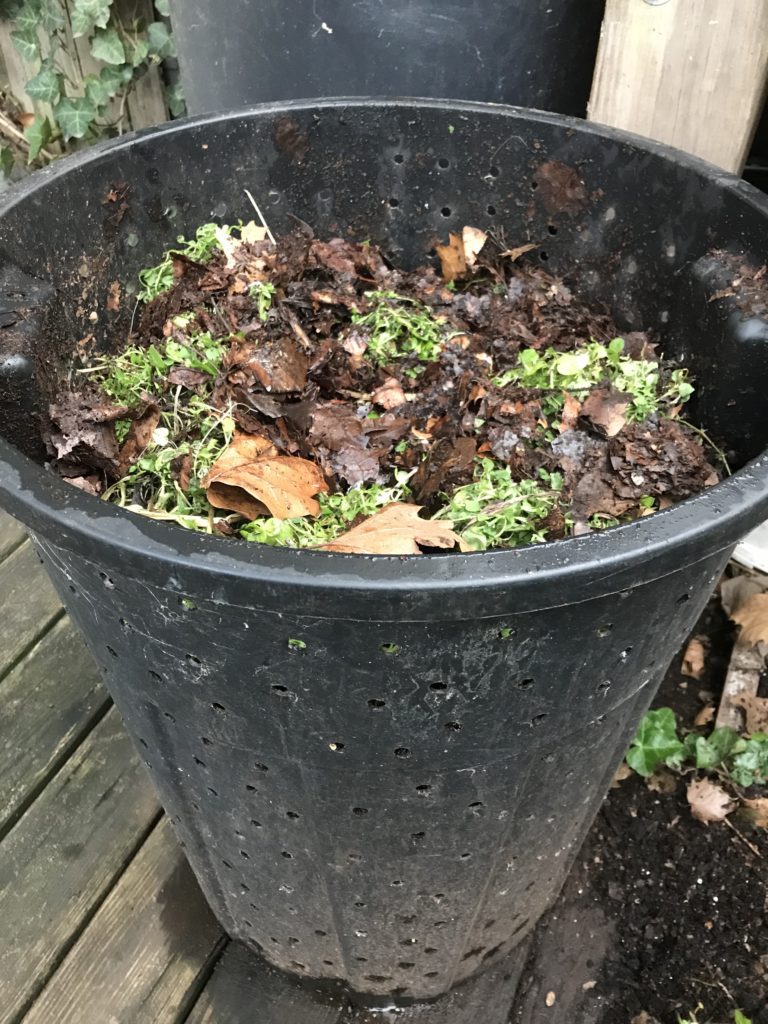
I’m surprised that my trash can composter is still working this far into the winter season.
I got lucky- we had a few straight days of rain here and temperatures hit 50 degrees
The key to composting through winter is to keep your pile as large as possible with a thick leaf layer on top of each food scrap deposit.

I have a rolling bin. Do I roll each time I add to it, or should i let the green sit there with the brown on top?
Hi Ruth,
I’m not a big fan of tumbling, but if you’re adding food scraps to it once a week, try tumbling it once every other week. It’s not necessary to tumble it constantly, but if it seems stagnant (compost thermometers come in handy for this) then tumbling can help bring it back to life.
Tumbling is also good to see how damp and clumpy the contents are. The contents may appear dry when you open the tumbler/before you add your food scraps, but after a tumble it will often reveal that the underside is totally damp. My suggestion: never water a compost tumbler!
Let me know if you have any other questions. Thanks for writing!
Hi! Any advice on a type of compost bin for the Phoenix, AZ weather? It gets extremely hot here in the summer, and we have rats and pigeons that I fear that may find their way to the bin with this Geobin style. And it just me and my husband in the household who don’t produce too many food scraps so I question the size bin we need as well, thanks!
Hi Margarita,
The larger the bin, the easier the composting process becomes and the better the results.
Ultimately, as long as you’re heavy on your base layer of brown materials (18″ of leaves/grass/straw/dead plants), and you cover each week’s food scrap deposits with double that amount in browns, you should handle any potential pest risks just fine.
If you’re still not comfortable, you could try a compost tumbler, or a pair of trash cans with holes drilled- I have videos on my youtube channel explaining both of these composting types. They’re a little trickier to get right, but I’m here to coach you through it if that’s the way you’d like to try it.
Let me know if you have any other questions, and thanks for writing!